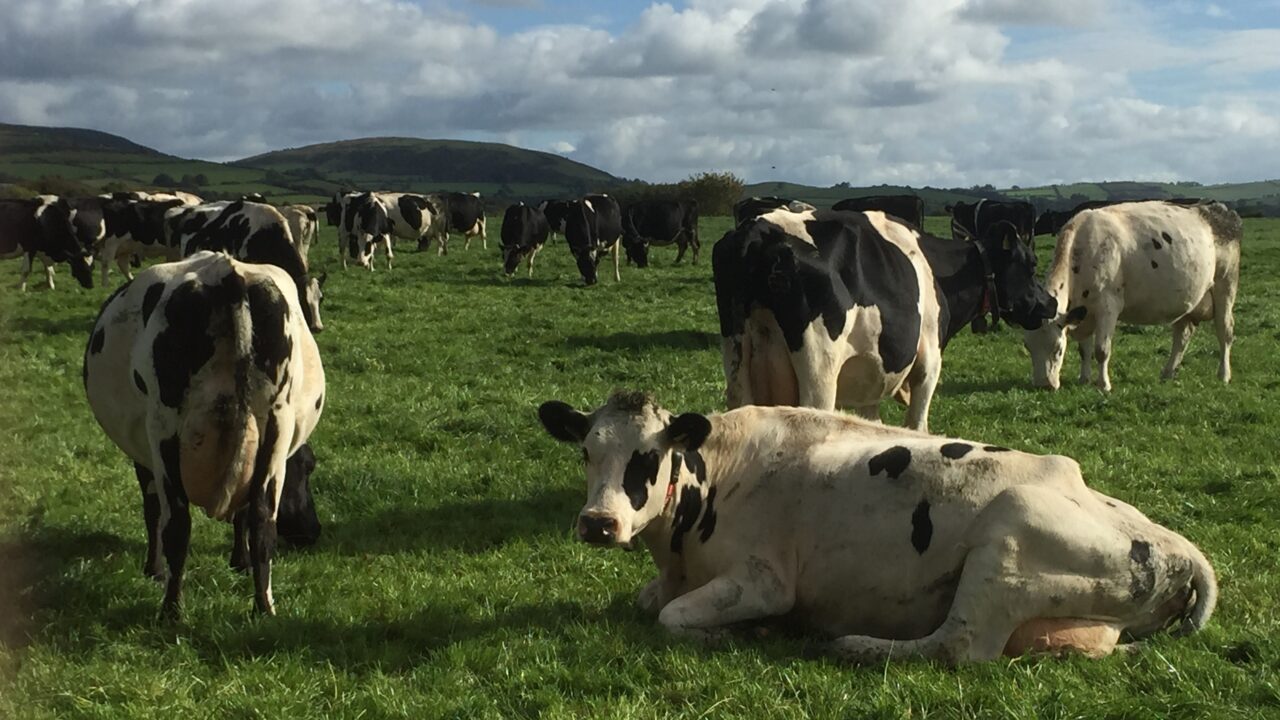The Department of Agriculture, Enterprise and Rural Affairs (DAERA), in Northern Ireland, has issued management notes for dairy farmers during the month of June.
Christopher Breen of the College of Agriculture, Food and Rural Enterprise (CAFRE) has compiled a series of best-practice guidelines, on behalf of the department.
Slurry and fertiliser for second-cut silage
At soil index 2 for phosphate and soil index 1 for potassium – typical soil indexes of fields with a history of being cut for silage – slurry has the potential to provide some of the nitrogen and potassium, and all of the phosphate required.
An application of 22m³/ha, or 2,000 gallons/ac, of dairy cow slurry and 375kg/ha, or three bags per acre, of a 22:0:10 type fertiliser can meet second cut requirements at these indexes.
At a practical level, evenly-spread slurry improves silage fermentation and minimises sward damage.
Growing a low-potassium (K) silage for dry cows
According to Breen, there are health and performance advantages to producing silage specifically for dry cows.
Aim for a low-potassium grass at cutting, as high-potassium silage is associated with metabolic disorders and subsequent poor milk yields in early lactation cows.
Fields previously cut for silage should not receive slurry again.
An application of 315kg/ha, or two-and-a-half bags per acre, of CAN fertiliser (27:0:0) is enough to grow low-potassium silage for dry cows.
Leave cutting until early August, as stem development coincides with a fall in the grass potassium levels. To avoid mould growth or mycotoxins, dry matter of harvested grass should not rise above 35% before baling.
It takes 7ha to produce enough bales to feed 100 cows in the last four weeks of the dry period. Store these bales separately and make sure to only use for dry cow feeding.
Condition scoring late-lactation cows
Cows calved last autumn are over 200 days in milk and should now be condition scored. With a target condition score of 2.75 at calving, these cows should have a score of about 2.5 at the moment.
To condition score, assess the fat cover over the loin, pelvis and tail area.
- Loin: There should be a slight depression along the cow’s top-line and loin. The shelf at the end of her transverse processes and flank should be filling.
- Pelvis: There should be a good cover of tissue developing on the plates.
- Tail area: There should be a good cover of tissue over the pin bones, and the cavity at the tail-head should be filling.
If there are some cows that have not yet reached this stage, and are well-past 200 days in milk, increase their dry matter intake.
Water for cows at grass
Water for cows at grass is extremely important. 100 cows drink on average 6,500L daily. If temperatures reach above 20°, this figure can double.
Troughs should be large enough so that 10% of the herd can drink at any one time. According to Breen, 30-50% of water intake occurs within one hour of milking.
Troughs in the centre of paddocks with fast-flow valves and large-bore pipes ensure cows have easy access to water. Ensure troughs are cleaned regularly as cows are very sensitive to smell and will not drink dirty water.
Checklist for June
Breen also provided a ‘June checklist’ for dairy farmers.
Job checklist for June:
- Graze swards down to 1,600kg DM/ha to maintain sward quality;
- Think about dry cow winter diets now, so that low-potassium silage can be made;
- Top grazing swards, which contain dead grass or seed heads, to maintain sward quality;
- Calibrate parlour and out-of-parlour feeders to ensure accurate feeding;
- Carry out spraying if conditions are suitable and docks/weeds are at the right stage for control;
- If spraying docks in silage fields, generally allow an interval of at least 21 days between spraying and harvest.



